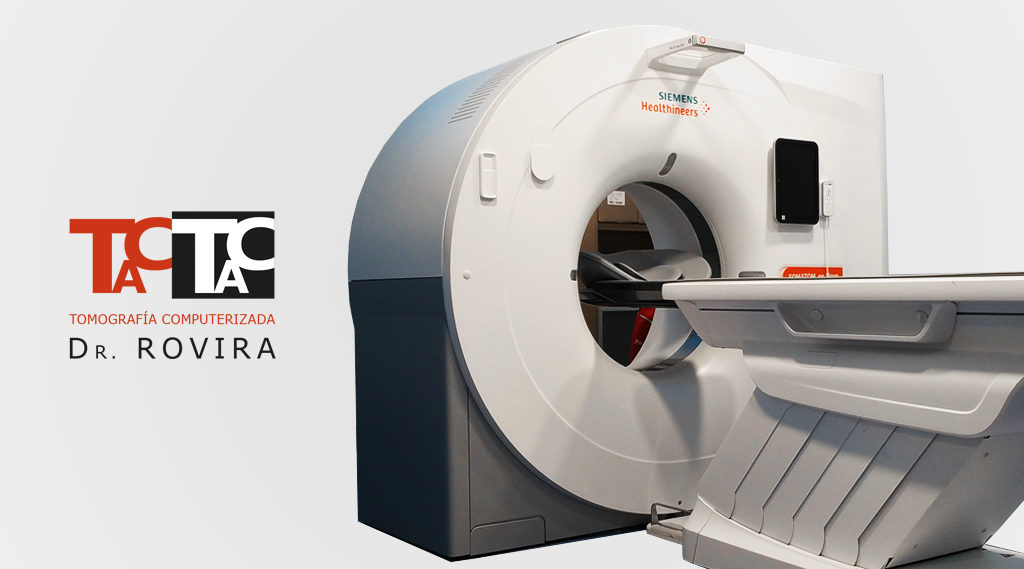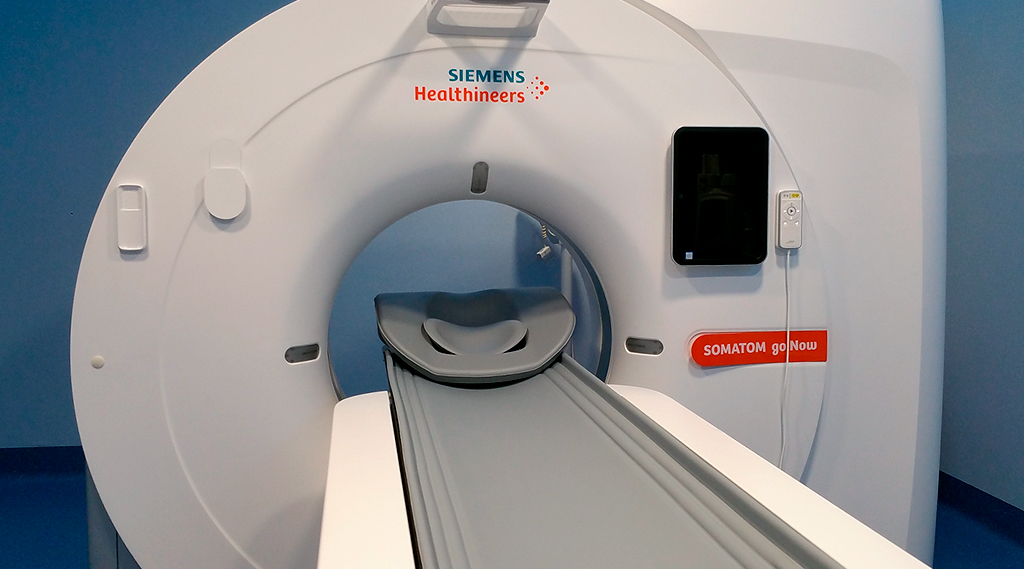- +34 971 721 339
- rx@doctorrovira.com
- C\ Missió, 4-B, Bajos
CT Scan
Computerized Axial Tomography
SIEMENS SOMATOM go.Now®
32 CUTS
LOW DOSE RADIATION

Computed Axial Tomography (CAT) scanning combines special X-ray equipment with sophisticated computers to produce multiple images or visualizations of the inside of the body. These images allow subsequent reconstructions in all planes and 3D.
The high resolution and sensitivity allows detailed study of the body. In severe acute processes (accidents, heart attacks
brain, bleeding, acute abdomen, respiratory distress …), is our main diagnostic tool.
However, it should be noted that you use X-RAYS, so unnecessary and repeated procedures (except essential ones) should be avoided.
How the test is performed
If the contrast is necessary, you will be told when giving the appointment to fast on solids for 4 hours. If the use of oral contrast is necessary, it will be administered in the center itself (between 90 and 120 minutes before the start of the test).
The scans are very fast and in most cases in 5 minutes it will be finished.

Preparation and advice
You should wear comfortable, loose-fitting clothing for the exam. You may be provided with a gown to wear during the procedure.
Metal objects such as jewelry, glasses, dentures, and hair clips can affect CT images, so you should leave them at home or take them off before the exam. You may be asked to remove hearing aids and removable teeth. Women will be asked to remove their bra if it contains metal components.
You may be asked not to eat for several hours before, especially if contrast material will be used in the exam. You should report if you have any known allergies to contrast materials, your doctor may prescribe medications to reduce the risk of an allergic reaction.
Also, tell if you have a history of diabetes, kidney disease, or thyroid problems. To assess the suitability of the use of contrast and take preventive measures.
WOMEN SHOULD ALWAYS INFORM THEIR DOCTOR AND TAC TECHNICIAN IF THERE IS A POSSIBILITY THAT THEY ARE PREGNANT.
Types
- ABDOMINAL AND VARIOUS CT
SKULL CT
FACE CT AND SKULL BASE ORBIT CT
EAR CT
FACIAL / BREAST CT
PEÑASCO, MASTOIDES AND CAIS DENTAL CT
NECK CT
THORAX CT
ABDOMINAL-DYNAMIC CT (with contrast).
MULTIPHASICAL-UROTH RENAL CT (with contrast iv.)
PELVIS CT
THORACO-ABDOMINAL-PELVIC CT
- MUSCULOESQUELÉTICO CT
COMPLETE COLUMN CT
CERVICAL COLUMN CT
DORSAL COLUMN CT
LUMBO-SACRA COLUMN CT
SACRO / SACROILIAC CT
UPPER / LOWER EXTREMITY CT
HIPS / KNEES ROTATIONAL MMII / KNEE TC
-
VASCULAR CT
(with contrast iv.)
CEREBRAL ARTERIES CT
CEREBRAL VEINS CT
SUPRAORTIC ARTERIES CT
LUNG ARTERIES CT
SACRUS / SACROILIAC CT
Dr. Rovira
Today, the Rovira Cabinet has new professionals, new infrastructure and, as always, the best care and service in Diagnostic by image.
Contacto
- c/ Missió, 4-B, Bajos
- 971 721 339
- 971 721 362
- rx@doctorrovira.com
© 2020, Dr. Rovira Clinic. All rights reserved.

